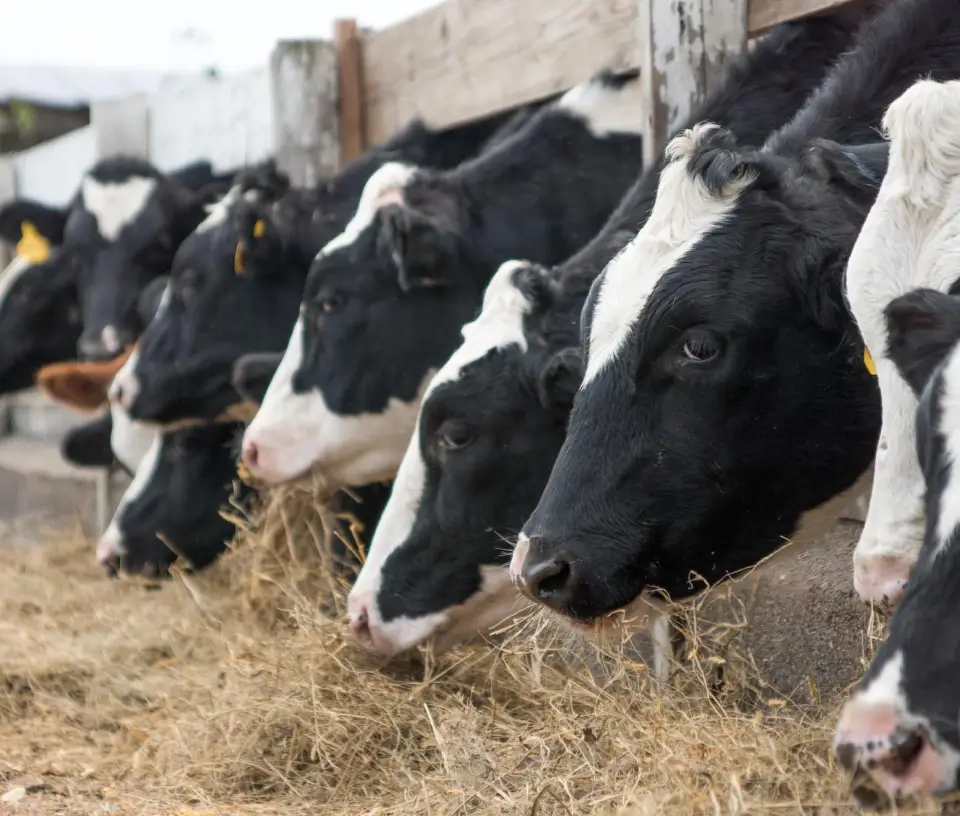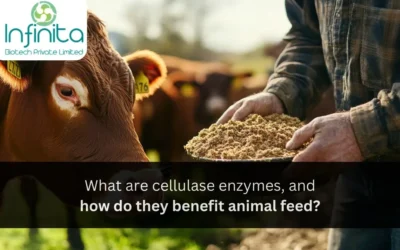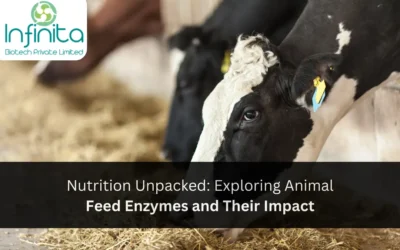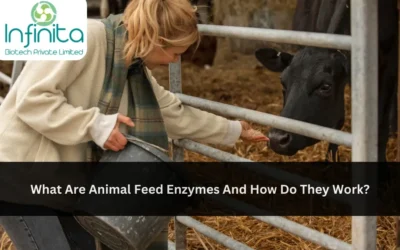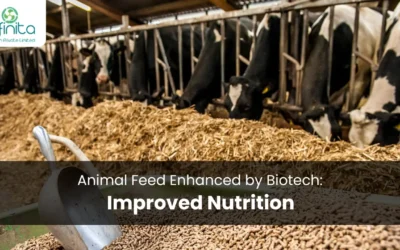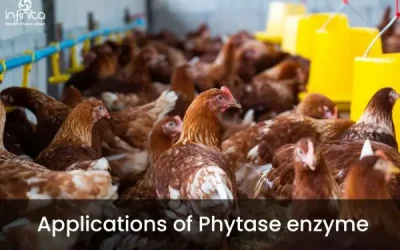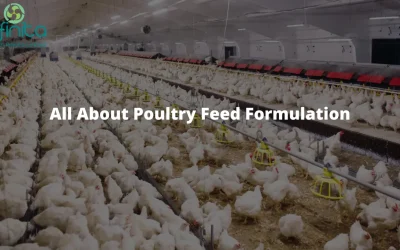How Are Enzymes Useful In Animal Feed?
Enzymes are proteins that help with the metabolic reactions in the body. In spite of the fact that domesticated animals’ gut microflora produce a few enzymes, they do not produce all the enzymes in adequate amounts to hydrolyse NSP, proteins or phytates to allow assimilation of all the nutrients. Enzyme supplementation improves the nature of feedstuffs and animals, bringing about higher overall revenues. The addition of enzymes in animal feed assists with delivering more meat per animal at a much lower cost while improving the general long-term wellbeing of the herd. Vet expenses and death rates additionally decrease with the utilisation of enzyme supplements in animal feed. Enzymes originate from an assortment of characteristic sources, including plant concentrates, animals, and microorganisms. Enzymes are broadly utilised by the farming, brewing, biofuel, dairy, and rubber enterprises to support production and limit costs. The principal enzymes utilized in feedstuff were arabinoxylanases and beta glucanases. These enzymes were utilised to break down the stringy segments of grains, making them easier to digest and allowing more uptake of indispensable supplements in the gut. From that point forward, enzyme innovation has empowered pig and poultry to extract nutrients from their feed effectively, permitting them to utilise the feed more effectively and improving their general wellbeing.
Characteristics of Enzymes:
Enzymes are organic chemicals that quicken chemical reactions. They are proteins, with complex structures that permit them to stay stable during the high temperatures vital for feed production, and while travelling through the animal’s gastrointestinal tract. One of the most significant qualities of the enzyme is its capacity to degrade explicit substrates in exact reaction sites. The specific enzymes utilized in the advancement of feedstuffs are intentionally chosen to target distinct substrates utilised in that feed. Enzymes will just react under specific conditions. The moisture content, amount of enzymes utilised, temperature, and pH levels during use must meet the proteins’ particular reactive prerequisites for them to work viably. Under ideal conditions, a greater concentration of the enzyme will bring about a quicker rate of reaction.
Types of Enzymes in Animal Feed
1. Starch:
The wasteful utilisation of starch is especially observable in weaned piglets. Healthy development rates suffer because of the piglets’ failure to completely process the starch in maize or corn, which is the most well-known type of feed. Adding enzymes assists in quickly separating the starch in the piglets’ immature small intestine, permitting a more prominent extent of supplements to enter the pig’s system.
2. Fibre:
Monogastrics, or animals with a solitary chambered stomach, cannot process fibre. Fibre is a decent wellspring of hemicellulose complex, however, is not digestible by the animals. Pigs and poultry normally utilise sinewy food, e.g wheat, rye, or barley meal. Hemicellulose in inedible fibre upsets their capacity to retain supplements from their feed, which can restrain development and lead to unexpected frailty. Adding enzymes to high-fibre feed improves its dietary benefit, helping the animal to develop rapidly and lessening stomach related medical problems.
3. Protein:
Many young monogastric cannot use the considerable amounts of protein found in soybean and other such foods. A considerable amount of the regular feedstuffs utilised likewise contain anti-nutritional factors (ANFs) that block the retention of supplements as well as can harm the insides of their gastrointestinal walls. Enhancing feed with enzymes will assist the animal in hydrolysing the protein to peptides and amino acids, therefore, improving ingestion and neutralising the impacts of ANFs.
4. Phytase:
Phytic acid secures the phosphorus in feed, diminishing the edible phosphorus by 60 to 70 per cent. Ranchers and breeders must add phosphorus to the feed to guarantee appropriate nourishment during the lifecycle of pig and poultry. Adding a phytase enzyme to the feed will unlock the phosphorus from phytic acid, permitting the animal to assimilate a higher level of the phosphorus in the feed. Lessening waste items containing phosphorus is additionally better for the earth. Phosphorus contained in animal waste in the end filters into groundwater, lakes, and streams. Algae flourish with phosphorus and multiply in its presence, which exhausts the quantity of oxygen in the water, destroying plants and compromising the local ecosystem.
Benefits of Enzymes in Animal Feed:
The use of enzymes in animal feed has various health, environmental and financial advantages.
1. Promotes Good Health Among Livestock:
By expanding the absorption rate of supplements in the gut, enzyme supplements are a compelling method of advancing general good health among domesticated animals. Animals will stay healthier for longer periods of time since more effective retention of nutrients from their feed assists with advancing enteric wellbeing and restrains the development of ailment causing microscopic organisms. This can decrease the frequency of disease and ailment among animals, reducing veterinary expenses and improving in general efficiency.
2. Helps The Weaning Process For Young Animals:
Enzymes are likewise a compelling method of helping the weaning procedure for young animals, as those under a specific age come up short on the full supplement of enzymes required for effective digestion. Their failure to totally digest a non-milk diet frequently prompts gastrointestinal issues and a raised death rate, the two of which can be avoided with the inclusion of enzymes to their feed.
3. Boosts Weight Gain, Health and also Increases Egg Production In Hens:
When added to the eating regimen of hens, enzyme supplements were found to support weight gain and wellbeing, and in addition to raised egg production. By expanding the volume of meat or eggs created by singular domesticated animals, enzyme supplements can significantly improve profits.
4. Helps Animals Properly Digest Their Feed And Produce Less Manure:
Utilising enzymes in animal feed is likewise advantageous for the environment. Animals that can appropriately process a bigger level of their feed in this manner produce less excrement, which contains littler amounts of phosphorus and nitrogen. Such mixes adversely affect nature.
How To Use Enzymes In Animal Feed?
There are two different ways of using enzymes to improve the productivity of animal feed. To begin with, you can utilise them to reformulate the feed, diminishing expenses. By consuming higher fibre by-products than is conceivable without enzymes, you can supplant a portion of the wheat, corn, or grain in the animal’s eating regimen and decrease the fat level. Also, one can add enzymes directly to the feed and produce more meat or eggs, accordingly fundamentally sparing poultry manufacturing cost.
Technological advances in the field of biochemistry have made accessible for large scale manufacturing and sale of numerous enzymes that were some time ago unsatisfactory for business use because of high production costs. Using enzyme supplements offers insurance from commodity changes that can altogether raise feed costs, which can transform what ought to have been a productive year into a misfortune. The advantages of enzymes are getting better acknowledged as more research is done. For the animals, enzymes advance gut wellbeing, produce uniform growth and improve overall wellbeing. For the producer, they decline feed costs and raise profits. Each kind of enzyme has its own particular capacity and consequently do not meddle with each other. The reality is, the use of enzymes will keep on developing as we become familiar with the technology.
